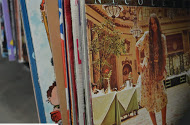The resurrection of vinyl

It’s everywhere. Urban Outfitters, pre-teens’ bedrooms and magazine pages. Adolescents are opening up the packed-up dusty boxes of records from their own parent’s teenage years and placing them on their Crosley records. All this is happening to vinyl fanatics’ dismay.
Though online consumption of music is more common than ever, and streaming services like Spotify and Pandora offering paid unlimited access to music both online and offline, vinyl sales are also rising. While CDs are decreasing in popularity, records have been seeing a 260% growth in sales since 2009.
The signature briefcase design of the Crosley record player is a hit especially among a younger audience. However, avid record collectors and those involved in DJing on turntables claim that it tends to damage records, scratching the surface of the record with its needle tip and often-called “flimsy plastic” arm.
Not only is older music available as vinyl. Even newer pop and rap music like Selena Gomez and Kanye West can be found in this format. But ultimately those that are making the top ten of vinyl chart lists are either alternative modern music, along the lines of Surfjan Stevens and The War on Drugs, or older rock and alternative music like David Bowie and Led Zeppelin.
The greatest characteristic of records, in the eyes of many vinyl fans, is the nostalgic and recognizable flaws they produce with its distortions. Smart phones and iPods allow for a crisp and clean music format, but for many the authenticity from hearing the crackle of vinyl is more satisfying. Digital formats also allow for songs to be easily shuffled and switched, but this is not such an easy process in record players. This encourages albums to be listened the whole way through, without skipping tracks, heightening the musical experience.
